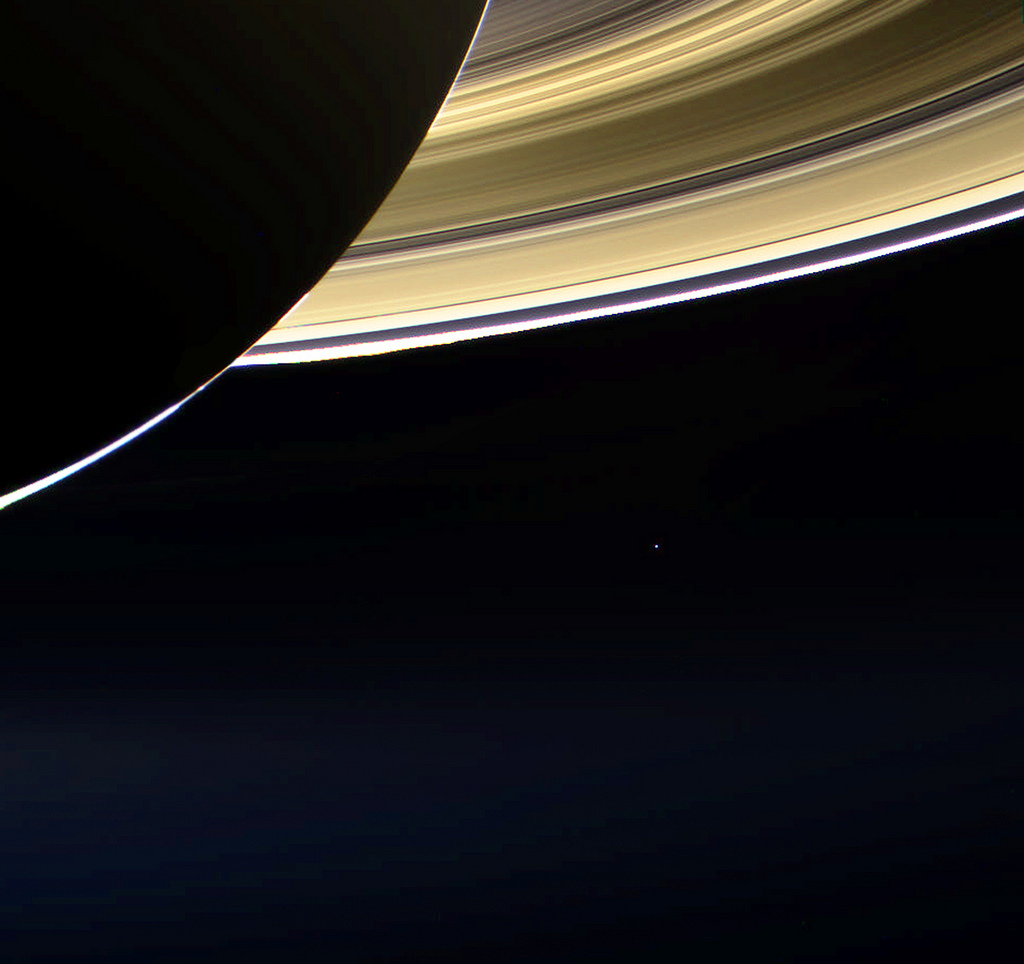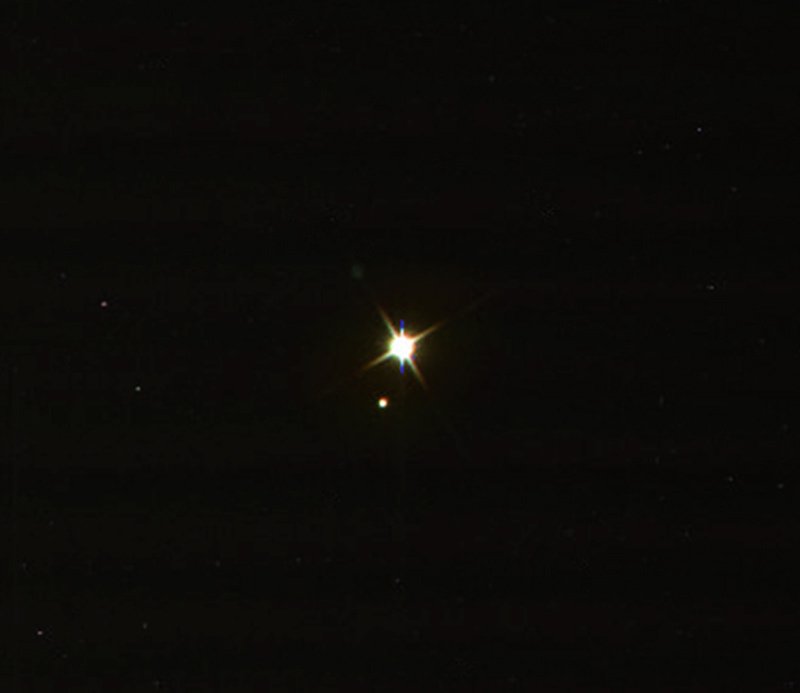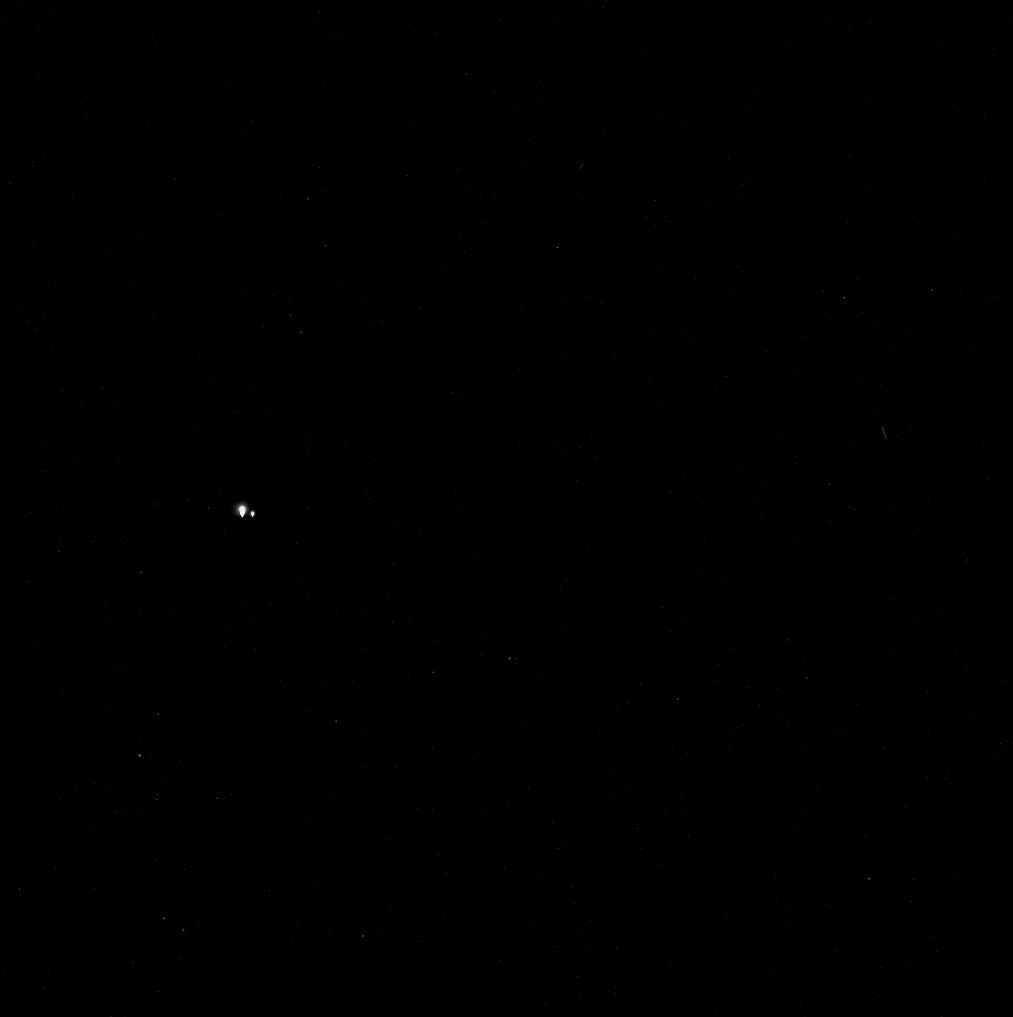
Last Friday, a remarkable thing happened, which received a lot of publicity, especially for space fans: the Earth had its photo taken from Saturn. The Cassini spacecraft took the images, which were used for The Day the Earth Smiled event, showing the Earth as a very tiny blue speck in the distance, with Saturn and its rings looming in the foreground. Zooming in closer, the Moon can also be seen. How cool is that? But that’s not all. … Although it didn’t seem to get as much attention, the Earth and Moon also had their picture taken from Mercury, by the MESSENGER spacecraft, on the same day!
Official versions of the Cassini images haven’t been published yet, but the raw images are now available, and they are beautiful. The image above is an RGB color composite, by Jason Major, of the original photo. The very tiny dot below the rings is Earth, about 1.5 billion kilometers (900 million miles) away. The second image is a zoomed-in view, showing both the Earth and Moon together.
Similar images had been taken a couple of times before, but this is the first one to show both the Earth and Moon as separate objects, as seen by Cassini near Saturn. This was also the first time that advance notice had been given for this unique photo opportunity, allowing people to “wave at Saturn” while Cassini took its photos.

As Linda Spilker, a Cassini project scientist at NASA’s Jet Propulsion Laboratory in Pasadena, eloquently stated: ”We can’t see individual continents or people in this portrait of Earth, but this pale blue dot is a succinct summary of who we were on July 19. Cassini’s picture reminds us how tiny our home planet is in the vastness of space, and also testifies to the ingenuity of the citizens of this tiny planet to send a robotic spacecraft so far away from home to study Saturn and take a look-back photo of Earth.”
In the MESSENGER images, both the Earth and Moon can be more easily seen, as Mercury is much closer than Saturn, about 98 million kilometres (61 million miles) away. These images were taken as part of a search for possible tiny as-yet undiscovered moons of Mercury. The images are slightly overexposed and saturated, resulting in the larger than normal appearance of the Earth and Moon and the downward-pointing “tails.”

“That images of our planet have been acquired on a single day from two distant solar system outposts reminds us of this nation’s stunning technical accomplishments in planetary exploration,” said MESSENGER Principal Investigator Sean Solomon. “And because Mercury and Saturn are such different outcomes of planetary formation and evolution, these two images also highlight what is special about Earth. There’s no place like home.”
This article was first published on The Meridiani Journal
Want to keep up-to-date with all things space? Be sure to “Like” AmericaSpace on Facebook and follow us on Twitter:@AmericaSpace




Imagine each and every one of us looking at these pictures and saying to ourselves, “Gee, I’m on that little blue dot – right now, as a matter of fact!” It is also extraordinary to look at the Messenger photo with our orbiting moon and think that our species sent manned spacecraft to land on that satellite. Truly a humbling experience for all mankind. Moreover, imagine that those “little, two-legged creatures with an advanced brain” actually developed the technology to accomplish such a wonderous feat. One wonders what other “blue dots” are out there with similar creatures who are doing similar things?
Tom, it’s always a pleasure and an inspiration to read your posts!
Leonidas, thanks for your kind words. Space has been a life long interest since Sputnik 1 in 1957 and especially when I saw the blinking light from Sputnik 2 that November (later believed to be the spent stage of the R-7 booster). I hope we see the day when we finally discover evidence of microbial life (at least) and I sense that such a discovery is just “over the horizon.”
Well, it may seem that I’m the youngest of AmericaSpace’s readership, being just 30 something, but I wholeheartidly share your feelings, even though I wasn’t around to see Sputnik up in the sky (but I’ve catched an Iridium satellite once with the naked eye!).
For me, the Calling I received from the Universe (as Neil deGrasse Tyson puts it) was watching the movie ‘Marooned’ at the tender age of 8, back in 1987. It was a transcendental experience for me and I immediately knew what I wanted to do with my life! I was drawn towards the Universe, with such an immense love and passion! And I knew my place was at NASA, exploring the high frontier. Though things didn’t turn out as planned and life took me on a different path, the love relationship still remains,inextinguible!
I also long for the days of these big cosmic discoveries! I hope I’m around to see humans set foot on the Moon again, and onwards to Mars!